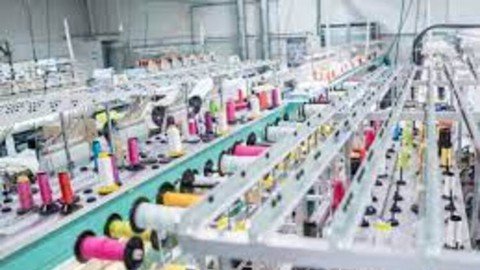Basic Study Of Textile Industry

Published 5/2023
MP4 | Video: h264, 1280x720 | Audio: AAC, 44.1 KHz
Language: English | Size: 588.95 MB | Duration: 1h 0m
This course is helps to understand about textile industry, fabrics and fashion
Free Download What you'll learn
textile industry
process in textile industry
basics of textile industry
introduction to textile industry
Requirements
No specific requirements
Description
The textiles and apparel industry has strengths across the entire value chain from fiber, yarn, fabric to apparel. The textile and apparel industry is highly diversified with a wide range of segments ranging from products of traditional handloom, handicrafts, wool, and silk products to the organized textile industry. The organized textile industry is characterized by the use of capital-intensive technology for the mass production of textile products and includes spinning, weaving, processing, and apparel manufacturingTextile Industry is providing one of the most basic needs of people and the holds importance; maintaining sustained growth for improving quality of life. It has a unique position as a self-reliant industry, from the production of raw materials to the delivery of finished products, with substantial value-addition at each stage of processingBoth industrialized and developing countries now have modern installations capable of highly efficient fabric productionThe modern textile industry is still closely related to the apparel industry, but production of fabrics for industrial use has gained in importance. The resulting wide range of end uses demands a high degree of specialization.The many types of modern textile fabrics, produced from both traditional and synthetic materials, are often classified according to structure. Fabrics made by interlacing include woven and knitted types, lace, nets, and braid; fabrics produced from fibre masses include bonded types, wool felt, and needle-woven types; composite fabrics are produced by uniting layers of various types.Textile fabrics are judged by many criteria. Flexibility and sufficient strength for the intended use are generally major requirements, and industrial fabrics must meet rigid specifications of width, weight per unit area, weave and yarn structure, strength and elongation, acidity or alkalinity, thickness, and porosity. In apparel fabrics, design and colour are major considerations, and certain physical properties may be of secondary importance.
Overview
Section 1: Introduction
Lecture 1 Introduction
Section 2: Definitions
Lecture 2 Definition-1
Lecture 3 Definitions-2
Lecture 4 Definitions-3
Lecture 5 Definitions-4
Lecture 6 Definitions-5
Lecture 7 Definitions-6
Section 3: Processes
Lecture 8 1.Spinning
Lecture 9 Spinning -2
Section 4: Weaving
Lecture 10 Weaving
Section 5: Dyeing
Lecture 11 Dyeing
Section 6: Garment manufacturing
Lecture 12 Apparels
Lecture 13 Apparels-2
Section 7: Other concepts
Lecture 14 Miscellaneous
students,professionals
Homepage
https://www.udemy.com/course/basic-study-of-textile-industry/Links are Interchangeable - Single Extraction
